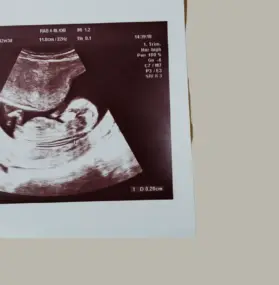- by Carrie Shaw
- on September 9, 2025
(Not a reader? Take a listen instead ⇓)
There’s a troubling trend arising in our postmodern age, an era that has also given rise to ‘post-truth’. New information platforms, social upheaval and the overabundance of global communication networks are giving this idea traction and we’re seeing it take root and grow, with potentially devastating consequences.
This is the generation that has unequivocally waged war on ‘gender’*.
Firstly, What Is Post Truth?
Post-truth can be summarised in the following way:
“Truth, many will assert, is merely subjective – in reality, there is no such thing as ‘truth’, or ‘the truth’, only ‘truths’; plural. These are felt differently by individuals and are as real and as true as each other. All emotions, thoughts, feelings or beliefs are correct, inasmuch as the person feels or believes them to be true. Validity and public opinion is based on emotional appeals, not necessarily connected to factual or provable information. In fact, facts themselves are potentially viewed as restrictive, negative, pessimistic, anti-society, or phobic in nature. “Post-truth is the burial of objective facts under an avalanche of emotional and personal belief. Post-truth is not only about winning votes, siding with friends, or dealing with political foes. It has more sinister effects. It is a gaslighting exercise.” | (The Conversation).
The History Of Post-Truth
“More than 30 years ago, academics started to discredit “truth” as one of the “grand narratives” which clever people could no longer bring themselves to believe in. Instead of “the truth”, which was to be rejected as naïve and/or repressive, a new intellectual orthodoxy permitted only “truths” – always plural, frequently personalised, inevitably relativised.” | The Conversation
Post-truth discourse includes communication which is simply hot air, often a clever mix of nonsense, humour, and boldly presumptive assertions. It all sounds impressive but is never based on factual objective examination of a subject. The ‘importance of truth’ may be talked about a lot, as part of these conversations, to lend credibility to the statements or claims.
“The proponents of post-truth communication relish things unsaid. Their bluff and bluster is designed not only to attract public attention. It simultaneously hides from public attention things (such as growing inequalities of wealth, the militarisation of democracy and the accelerating death of non-human species) that it doesn’t want others to notice, or that potentially arouse suspicions of the style and substance of post-truth politics. This engendered silence is not just the aftermath or “leftover” of post-truth communication. Every moment of post-truth communication using words backed by signs and text is actively shaped by what is unsaid, or what is not sayable.” | The Conversation
How Post-Truth And The War On Gender Are Connected
The war on gender seems to fall squarely in the camp of post-truth proponents.
We’re seeing more and more, in the media, in public conversation, in our schools and communities, the push for a redefining of what is meant by ‘gender’ – to the point where facts and provable science relating to human biology are being discounted or ignored.
Gender has traditionally been agreed to be determined at fertilisation and confirmed (assigned) at birth. Broadly speaking, and in normal fetal development, there will be 23 pairs of chromosomes (46 in total), one of which are a pair of sex chromosomes (either X or Y). One X chromosome is always required. Two of the same sex chromosomes (XX) means the foetus is female. Two different chromosomes (one X and one Y) means the foetus is male.
Despite seeing gender clearly defined all around us as distinct and fixed (male or female), gender is now being described as ‘fluid’ or even non-existent. Descriptions such as ‘non-binary, ‘genderqueer’, ‘transitional’ or ‘transgender’ are common-place. In fact, there are now over 53 recognised and accepted terms used to describe gender now found in our vocabulary.
Men and women are different in many ways. These differences include both biological phenotypes and psychological traits Some of these differences are influenced by environmental factors. Yet, there are fundamental differences between the sexes that are rooted in biology.
“Of particular interest are sex differences that have been identified in the brain. Although the brains of men and women are highly similar, they show consistent differences that have important implications for each sex. That is, brain sex differences uniquely affect biochemical processes, may contribute to the susceptibility to specific diseases, and may influence specific behaviours. Such biological differences should never be used to justify discrimination or sexism.” | US National Library of Medicine
A recent conclusion by Professor Robert Plomin of Kings College London, drawn from 45 years of research and hundreds of studies, is that “the single most important factor in each and every one of us – the very essence of our individuality – is our genetic makeup, our DNA.”
Yet ‘gender’, determined at the level of our DNA, is being increasingly thought of as ‘fluid’ or unfixed. ‘Gender’ can also be used to mean ‘gender identity’, now considered to be a spectrum on which you can decide, on any given day, which you ‘feel’ you are.
“And then I found that gender can have fluidity, which is quite different from ambiguity. If ambiguity is a refusal to fall within a prescribed gender code, then fluidity is the refusal to remain one gender or another. Gender fluidity is the ability to freely and knowingly become one or many of a limitless number of genders, for any length of time, at any rate of change. Gender fluidity recognises no borders or rules of gender.” | Kate Bornstein, Gender Outlaw: On Men, Women and the Rest of Us, 1994 (emphasis is ours)
The idea that gender isn’t rigid and fixed but rather a choice, based on feelings, is put forward as the higher ideal of utopian society:
“Ideally, we’d live in a world where everyone could exist as whatever gender they are without constantly having to explain or defend themselves. In a world like that, we might not have to put a name to a gender. But that’s not where we’re at right now. Instead, we live in a world where gender defaults to man or woman, and society at large rarely talks about genders that exist outside of that binary.” | Refinery29
Parents are being applauded for raising their children as ‘non-gender’ or ‘gender-neutral’ (they’ll decide when they’re older) or withholding announcing the gender of their child at birth (as if stating a biological truth is a negative). Even asking the most natural of questions (‘did you have a boy or a girl?‘) has become potentially fraught with disapproval.
Gender Dysmorphic Disorder And Gender Reassignment Surgery
Reading through the statistics regarding children and gender issues is alarming, to say the least. In the UK, children as young as four are being referred for gender reassignment surgery, with 50 children a week visiting a GP to discuss gender.
“Figures suggest a record number of kids now believe they were born in the wrong body and are being sent for controversial treatment.” – The Sun
Children 11 and older are being prescribed powerful hormones to stunt puberty in preparation for future gender reassignment surgery.
Closer to home, in Australia, an estimated 45,000 school-aged children (1.2%) are thought to identify as transgender. Being transgender or gender diverse is now considered to be “part of the natural spectrum of human diversity.”
“Gender may be the most important dimension of human variation, whether that is either desirable, or inevitable. In every society, male and female children are raised differently and acquire different expectations, and aspirations, for their work lives, emotional experiences, and leisure pursuits. These differences may be shaped by how children are raised but gender reassignment, even early in life, is difficult, and problematic. Reassignment in adulthood is even more difficult.” | Psychology Today
In the mid-twentieth century, John Money, Ph.D. helped establish the views on the psychology of gender identities and roles. In his academic work, Money argued in favour of the increasingly mainstream idea that gender was a societal construct, malleable from an early age.
John Money’s ill-advised experiment in gender identity however proved ultimately disastrous for identical twins, Bruce (later David) and Brian Reimer. Reading through the twins’ story and the outcome of Money’s interventions is difficult and disturbing.
“After a botched procedure for circumcision at six months resulted in severely damaged genitals, and on the advice of John Money, Bruce Reimer’s parents decided to raise Bruce as a girl. Physicians at the Johns Hopkins Hospital removed Reimer’s testes and damaged penis, and constructed a vestigial vulvae and a vaginal canal in their place. The physicians also opened a small hole in Reimer’s lower abdomen for urination. Following his gender reassignment surgery, Reimer was given the first name Brenda, and his parents raised him as a girl. He received estrogen during adolescence to promote the development of breasts. Throughout his childhood, Reimer was not informed about his male biology. When he was fourteen, Reimer began the process of reassignment to being a male. In adulthood, Reimer reported that he suffered psychological trauma due to Money’s experiments, which Money had used to justify sexual reassignment surgery for children with intersex** or damaged genitals since the 1970s. As an adult, he married a woman but depression, and drug abuse ensued, culminating in suicide at the age of thirty-eight.” | The Embryo Encyclopedia Project
Money’s ideas about gender identity were forcefully challenged by Paul McHugh, a leading psychiatrist at the same institution as Money. The bulk of this challenge came from an analysis of gender reassignment cases in terms of both motivation and outcomes.
McHugh denied that reassignment surgery was ever either medically necessary, or ethically defensible. To bolster his case, McHugh looked at the clinical outcomes for gender reassignment surgeries. He concluded:
“Although transsexuals did not regret their surgery, there were little or no psychological benefits: They had much the same problems with relationships, work, and emotions, as before. The hope that they would emerge now from their emotional difficulties to flourish psychologically had not been fulfilled.” | Paul McHugh, Ph.D
There is no doubt that there is a marked increase in children, young adults and adults who are distressed with their assigned gender. Gender dysphoria is a real and observable phenomenon. Yet surely gender reassignment is not the solution, but simply a band-aid approach to a deeper, far greater and more serious issue.
Intelligent Design: Let’s Talk About God
“He created them male and female and blessed them. And he named them “Mankind” when they were created.” | Genesis 5:2 (NIV)
The Bible, once considered a verifiable source and its author, the intelligent designer of all creation, states that humanity’s genders were clearly defined from the beginning – as male and female. Bible language, throughout all 66 books, confirms this by using specific pronouns such as ‘he’ and ‘she’ – gender-specific and certainly not ambiguous. Jesus himself believed and confirmed the Genesis record in Matthew 19:4 (also Mark 10:6), saying “Haven’t you read that at the beginning the Creator ‘made them male and female.'”
The differences between the genders are unique and distinctive, both designed by God with purpose in mind (Titus 2:1-5, 1 Peter 3:7) (1 Timothy 3:1 – 4:16). Both genders are intrinsically valuable and precious to God, and we see His characteristics displayed by the perfect merging of both the masculine and feminine traits. These distinct genders are the fundamental building blocks of God’s creation and are part of God’s plan for His family. His definition of marriage (Genesis 2:24) and the procreation of the species (Genesis 1:28) is the natural outcome of the union of male and female and clearly supports the biological truth embedded in our DNA.
The diversity found in humanity is to be celebrated at the same time as the definitive nature of our gender is to be applauded.
Furthermore, the church (the ‘body of Christ’) is described in poetic language as a bride (female), with Christ as the groom (male) (Ephesians 5:22-33); the symbolic language echoing the reality of human biology.
“While technically God’s design for man and woman may not be a salvation truth, practically it is indispensable for every person to know and experience in order to live their lives as followers of Christ in this world, as beings created by God as male or female by design and for a purpose.” – Crossways
Yet, the rejection of a Creator, of intelligent and purposeful design or a greater purpose at work, leads to the inevitable outcomes that we are seeing take root in today’s society. We are being encouraged to believe that there is no truth, only truths (each individual’s truth as true as any other), and subjective at that. Definitions and boundaries are deemed to be outdated and irrelevant.
And it seems gender won’t be the only casualty to result from the post-truth era – reason and the pursuit of knowledge and understanding are being lost in the clamour of opinion and emotional verification and in their place we find an epidemic of narcissism, arrogance and cynicism.
“Come now, and let us reason together”, God says in Isaiah. Although His ways are higher than our ways and His thoughts higher than ours (Isaiah 55:8-9), He encourages humans in the pursuit of knowledge, He takes pleasure in the reasoning of the human mind and the desire of mankind to understand the intricacies He has created.
“It is the glory of God to conceal a matter; to search out a matter is the glory of kings.” | Proverbs 25:2
Paul McHugh, Ph.D Has The Final Word
“In a [recent] interview from his home in Baltimore, where he still sees patients, McHugh explained that the “duty of all doctors who propose a treatment is to know the nature of the problem they propose to treat. The issue of transgender [people] is, the vast majority coming for surgery now don’t have a biological reason but a psychosocial reason.” While McHugh successfully lobbied for more than 30 years to keep gender-reassignment surgery from becoming a Medicare benefit, he supports the operation for those born with an intersex** condition, which means having a reproductive or sexual anatomy that doesn’t fall into the typical definition of male or female. People with abnormalities of development should be helped to find their place as they see it best,” McHugh said. “But they are a tiny number of the transgender population seeking and being given treatment.” | The Washington Post







Well reasoned, referenced and written. Thanks.